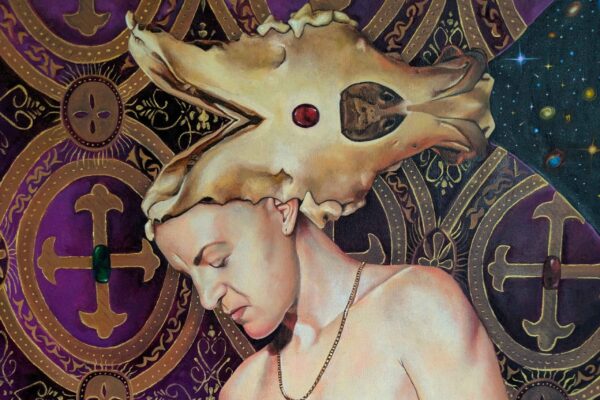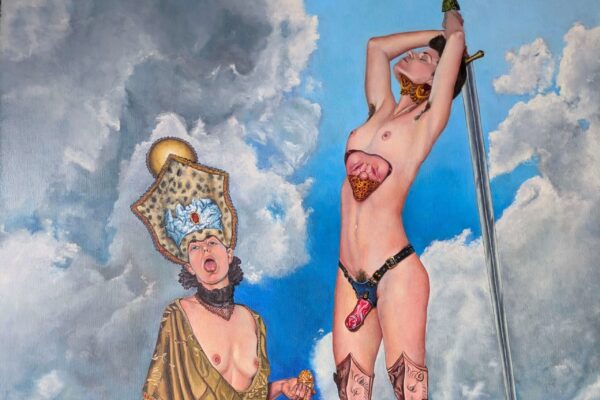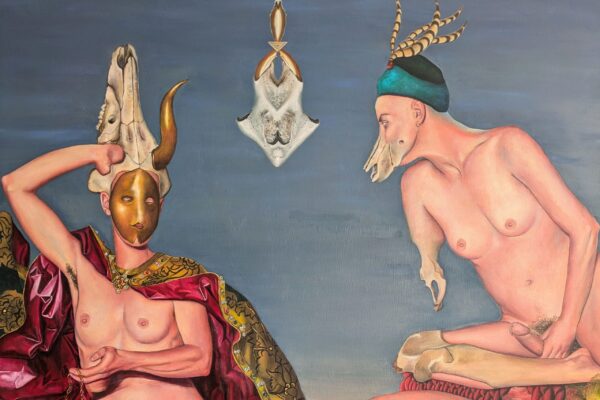About the exhibition
Kjipuktuk/Halifax artist Silas Wamsley’s work is inspired by 15th century Italian Quattrocento painters such as Carlo Crivelli and Cosmé Tura whose work combines the intricate ornamentation and iconography of Gothic era with the meticulous realism and emotional intensity of Renaissance art. Throughout this transitional period, religious themes remained a central focus. Gilded haloes disappeared from the heads of Jesus, Mary and the saints, giving way to more visceral depictions of the spirit-made-flesh, but the intent of such artworks remained consistent: they were to aid worship, provide moral instruction, and glorify both Church and Empire.
Like the artworks they reference, Wamsley’s sumptuous oil paintings express a complex relationship between corporeal and extracorporeal notions of being. His compositionally dense canvasses depict human, and human-ish, beings in transitional states, spouting hooves and horns, vines, and thorns. Though rendered with naturalism, they hold unnatural postures as if they are suspended in time, floating in opulent spaces unbounded by the laws of physics and gravity. They are adorned with ornate headwear, capes, and armor, and carry delicate, beautiful, and arcane objects with ceremonial reverence.
To be alive is to be in constant contact with both the sacred and the profane.
Articulating a productive, and distinctly queer ambivalence toward ontological distinctions between sacred and profane, body and spirit, real and symbolic, Wamsley’s work eschews the hierarchies, binaries, and fixed iconography that gave 15th century religious art its legibility. Instead, Wamsley explores how bodies, identities, and symbols are unfixed and impermanent, encouraging viewers to interpret his work (and by extension, the world) through the lens of their own embodied experience.







